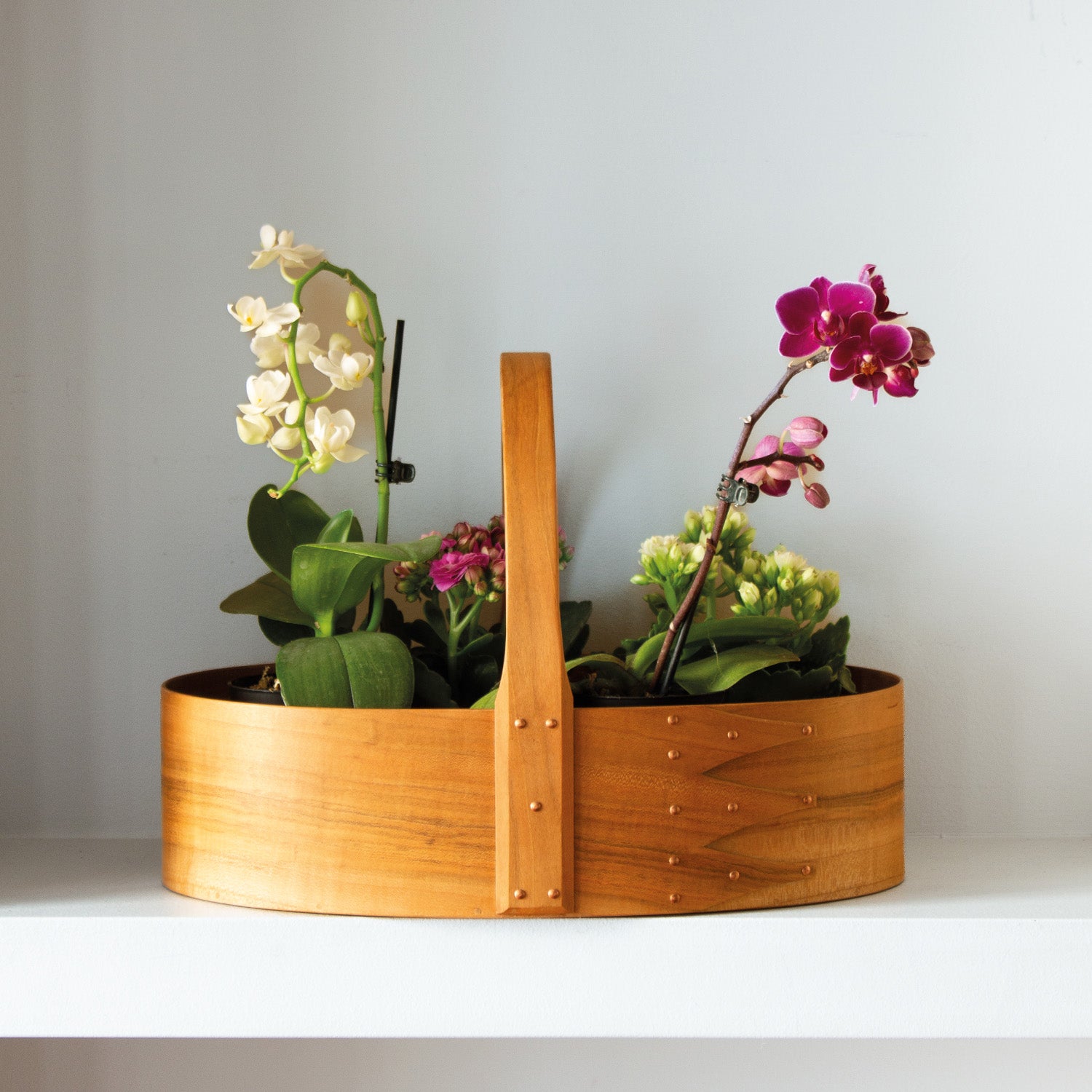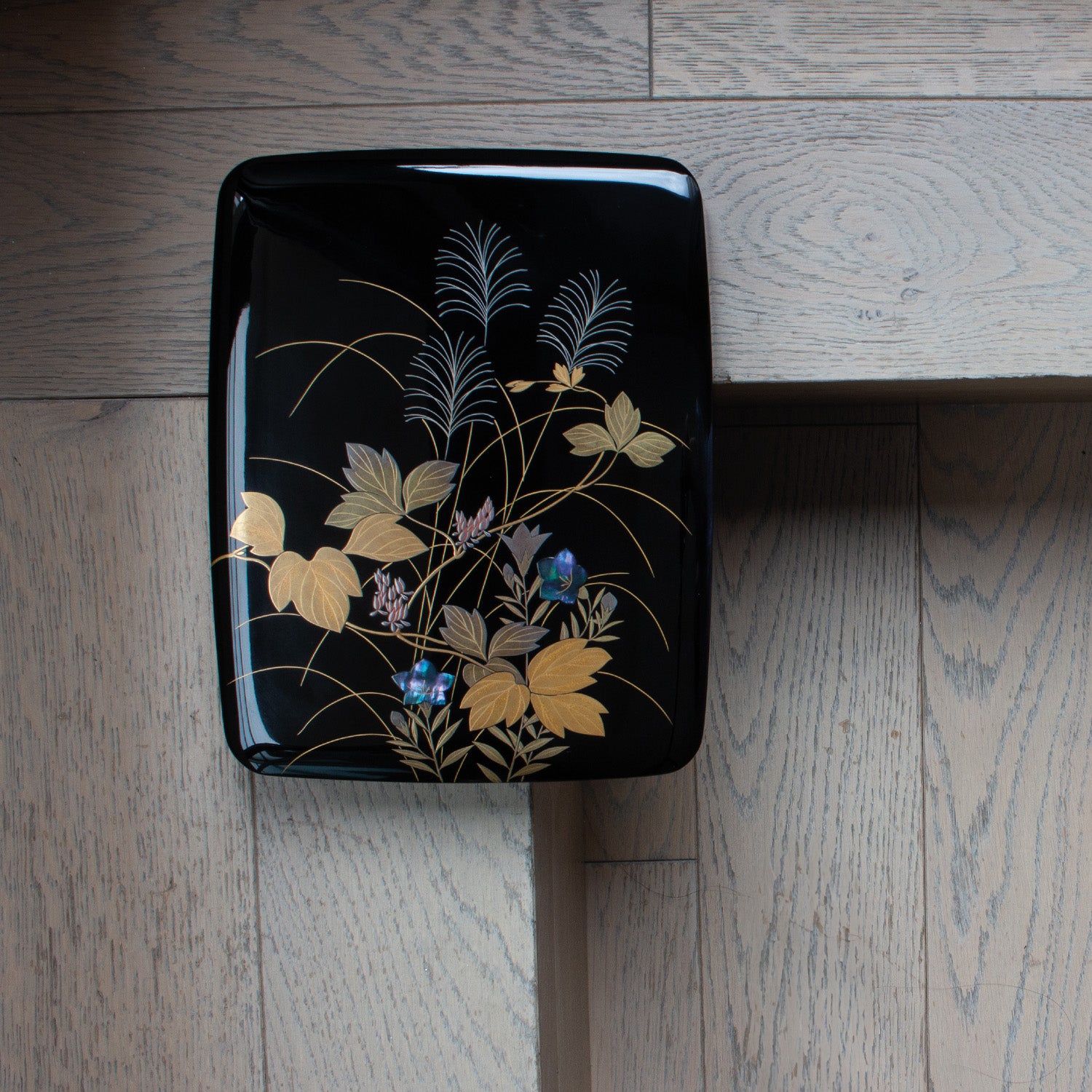


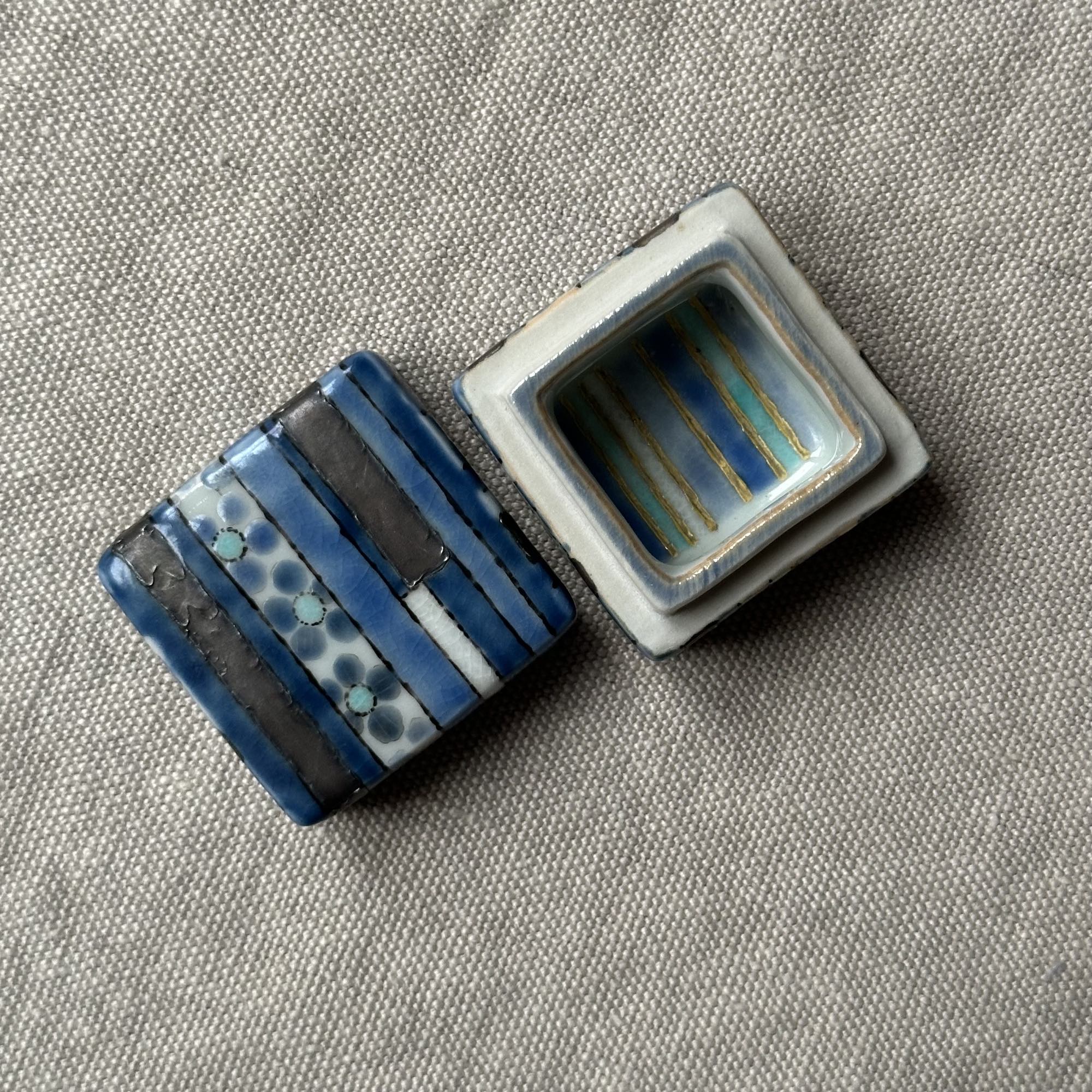
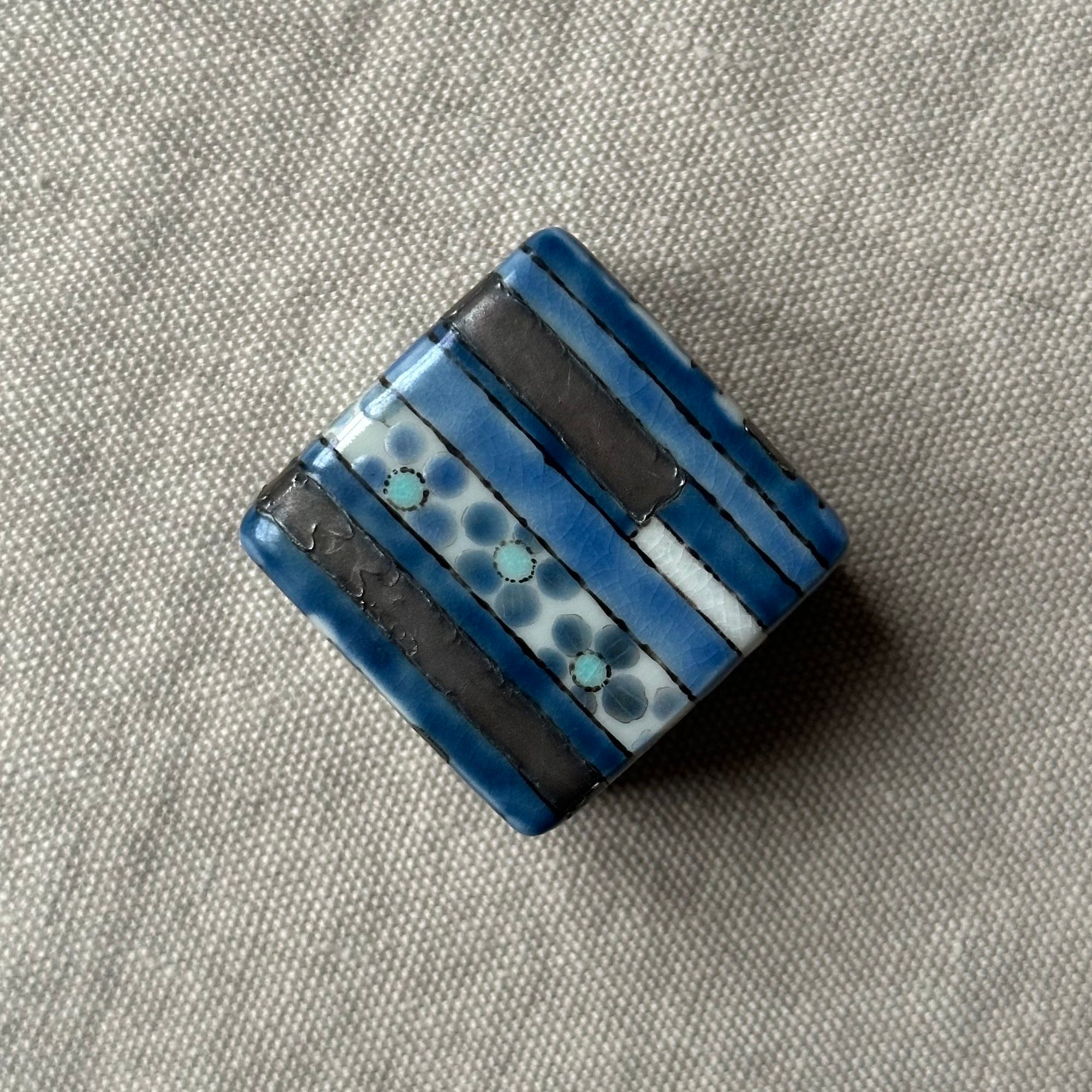
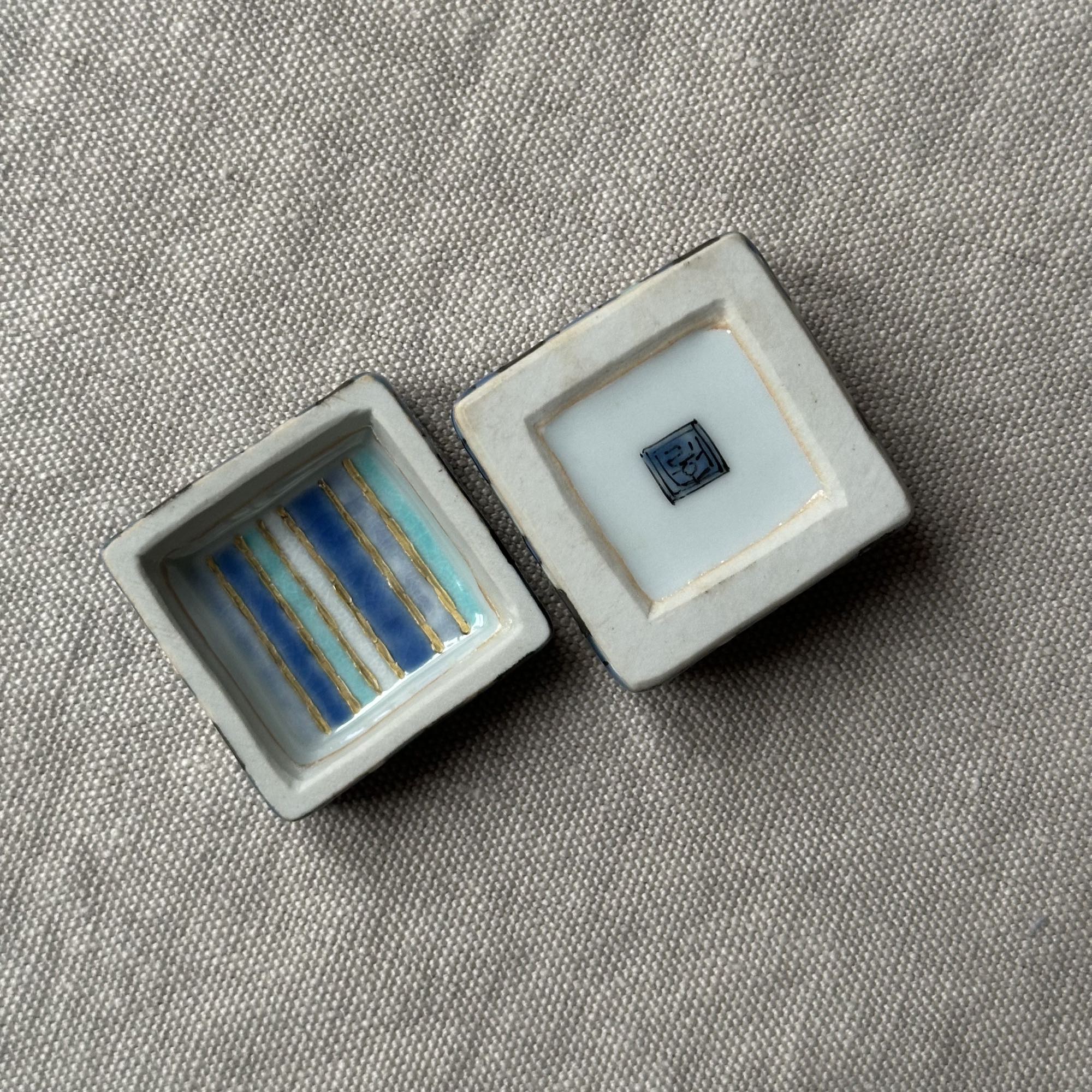
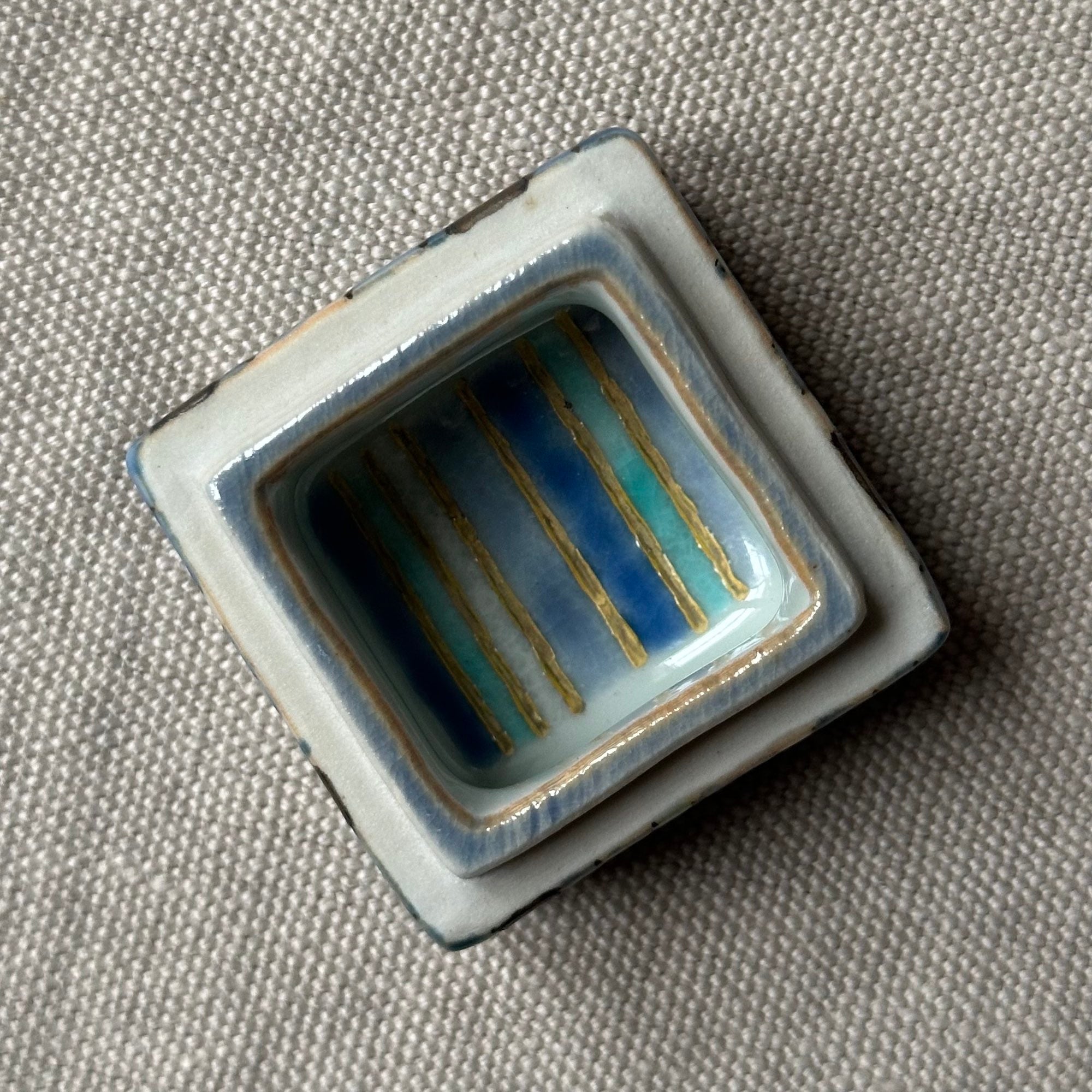
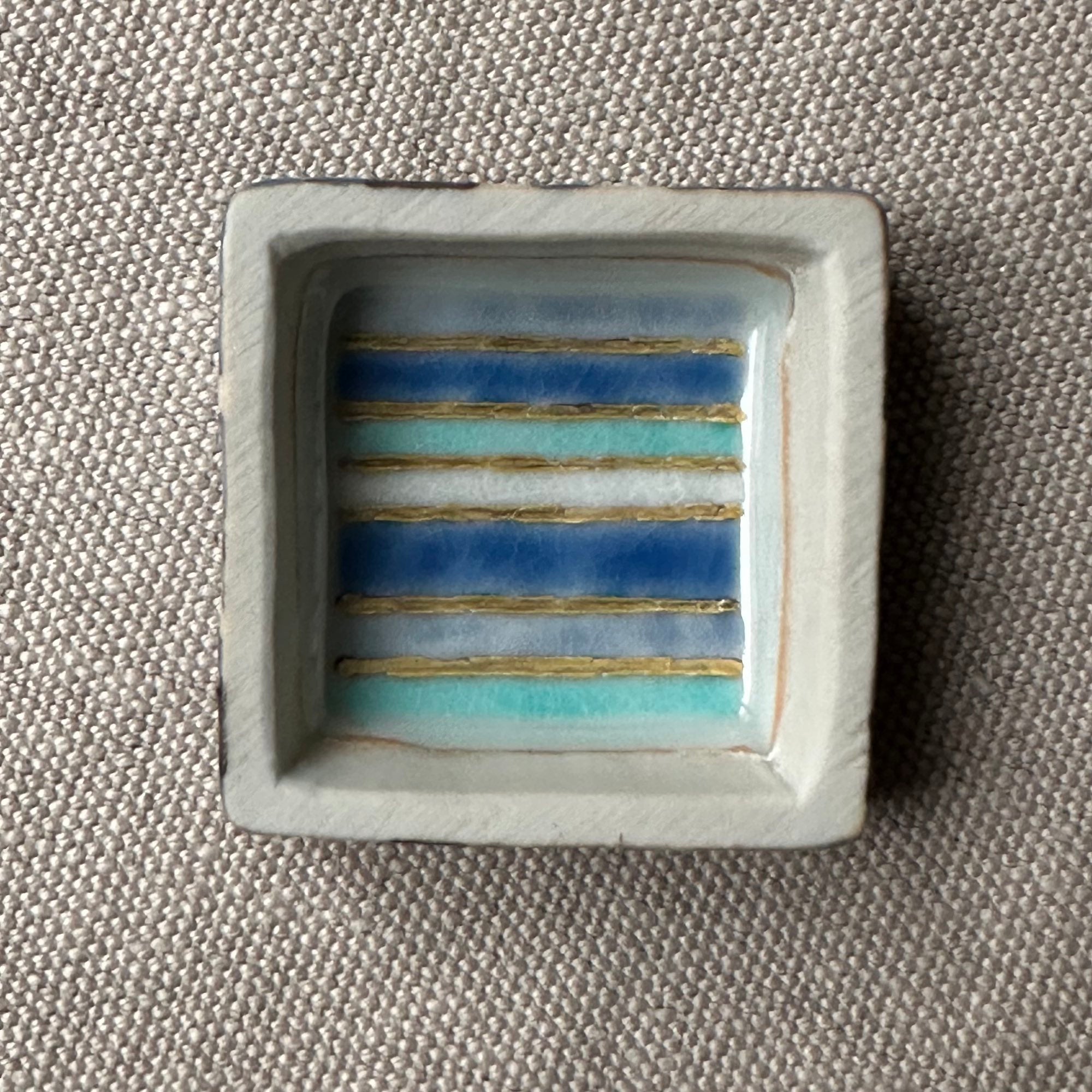


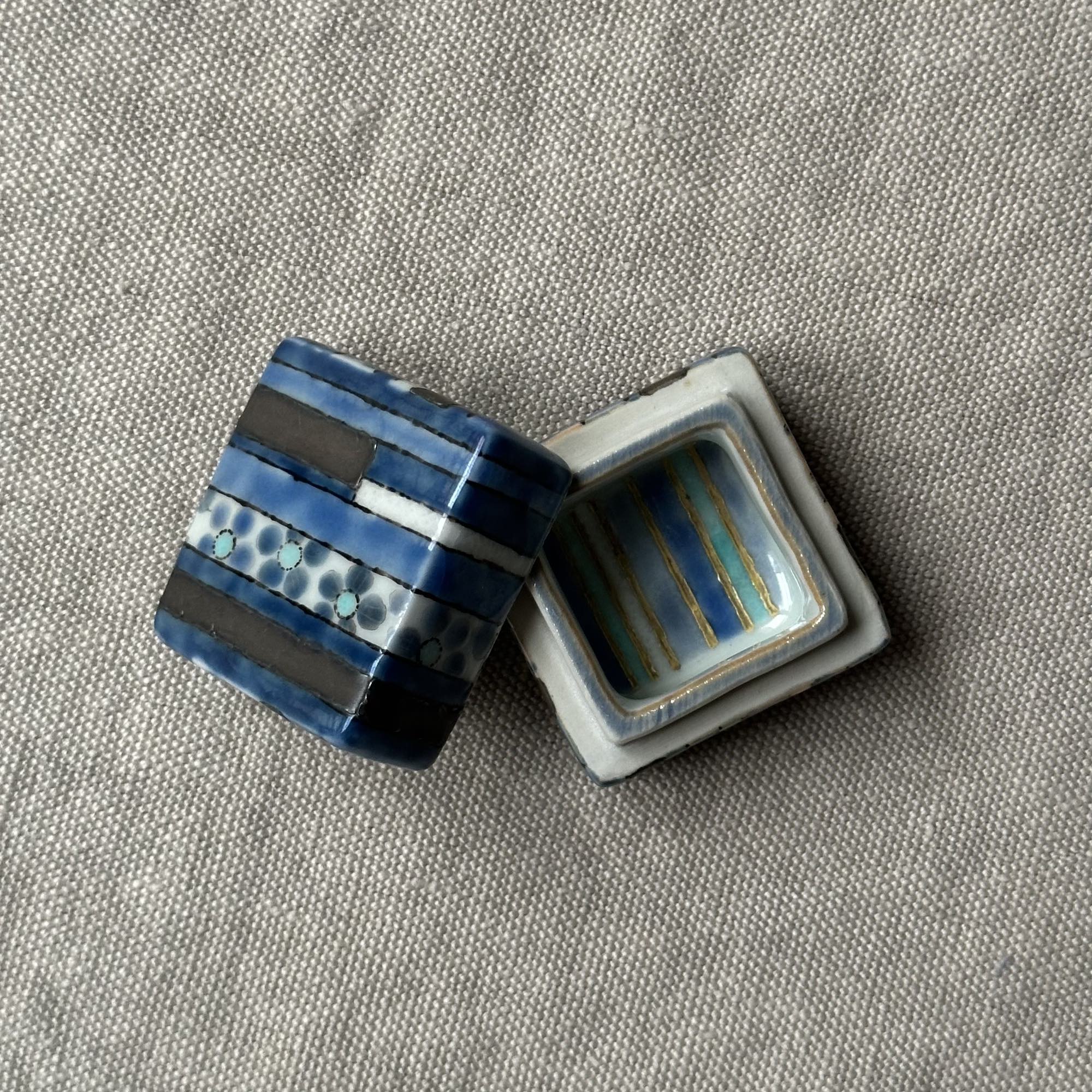

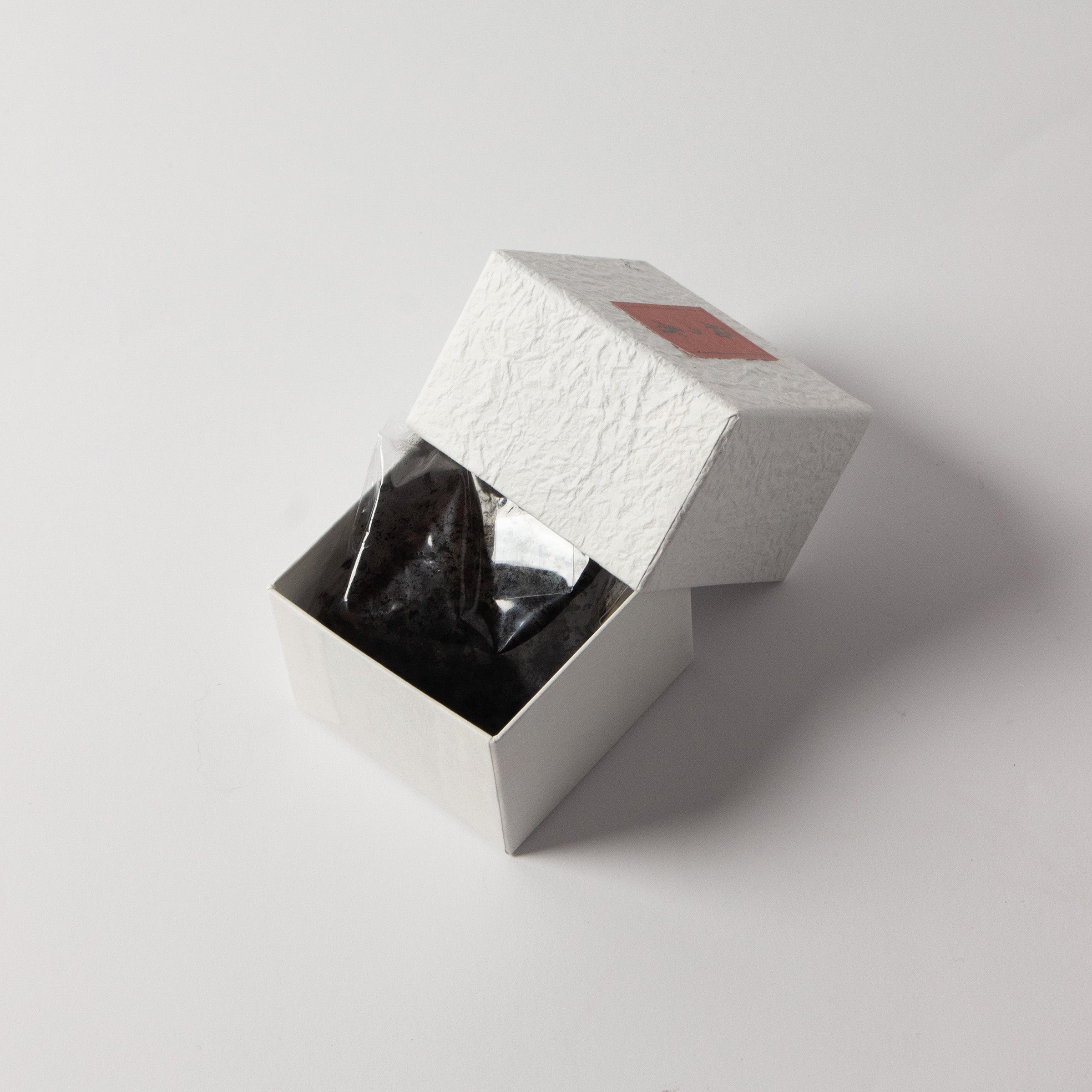
Kōgō porcelain by Ryo Sato and Japanese nerikō (incense balls)
In the art of Japanese incense, the kōgō is a small, precious box that preserves and showcases the nerikō, refined incense tablets crafted from precious woods and spices. Together, they embody a sensory tradition rooted in the elegance of gestures and the subtlety of fragrances, which Atelier Ikiwa was keen to celebrate by offering a carefully curated selection of superb kōgō, here crafted by the ceramicist Sato Ryo, accompanied by their nerikō boxes, to introduce this little-known art.
The craftsman
Ryo Sato is a Japanese ceramicist born in 1946 in Niigata. A graduate of Waseda University in 1970, he quickly turned to ceramics and continued his training in the Seto and Kutani workshops, where he deepened his understanding of the iroe tradition, the art of decoration with colored glazes. In 1979, he established his own studio in Ishikawa Prefecture. His work is regularly selected for the Japan Traditional Crafts Exhibition, which led to his becoming a recognized member of the Japan Kōgei Association. For several decades, he has exhibited in leading galleries and department stores, particularly in Tokyo. His style is characterized by a highly skilled use of polychrome glazes, geometric or naturalistic compositions, and a keen sense of light contrasts, placing his work firmly within the refined tradition of Kutani porcelain.
The technique and the decor
This kōgō has a square shape with slightly softened edges. It is made of porcelain and then decorated using the iroe technique, an overglaze decoration in which colored glazes are applied to the glaze before a second firing at a low temperature, allowing for great finesse of lines and nuances. The exterior faces alternate blue bands, circular motifs, and darker areas in a highly controlled graphic composition. The interior features a softer interplay of blue and seafoam green washes, enlivened by a few discreet gold lines that rhythmically structure the space without overwhelming it. The piece, signed at the base, highlights the luminosity inherent to iroe and the precision of line characteristic of Sato Ryo.
The nerikō
To enjoy the kōgō as intended, a box of nerikō is also included. This box contains thirty-six nerikō beads, each composed of a delicately fragrant blend based on sandalwood, crafted by one of Kyoto's oldest incense houses. To use them, place two or three in the kōgō and leave the lid slightly ajar. To stop the fragrance, simply close the lid. The nerikō beads should be replaced when they become dry. It is important to store unused nerikō in the tightly sealed plastic bag to prevent them from drying out.
To discover the art of Japanese kōgō and nerikō, we invite you to read the article we wrote on the subject, available via this link . Other kōgō are available on the site; feel free to browse our selection.
Practical information
Place of manufacture
Japan (Ishikawa)
Dimensions
Length 4.5cm - Width 4.5cm - Height 4cm
Weight (with box)
190g
Materials
Porcelain
Period
Heisei Era (1989-2019)
Accessories
For the kōgō: a protective box made of paulownia wood tomobako bearing the inscription of the work, the signature and the seal of the craftsman, as well as a protective cloth tomonuno bearing the seal of the craftsman.
For the nerikō: box containing thirty-six nerikō marbles.
The kōgō and nerikō will be packed together in a white cardboard box wrapped in a beautiful, skillfully knotted textile, making it an original, unique, and very elegant ready-to-give gift.
Usage tips
Place two or three nerikō beads in the kōgō, leave the lid slightly ajar to diffuse the fragrance or closed to stop diffusion. Replace the beads when they become dry and store any unused beads in their airtight bag. Keep out of reach of children and pets. Do not ingest. Avoid prolonged skin contact. If you experience discomfort or sensitivity to the scent, discontinue use. Store away from heat, humidity, and direct sunlight.
DELIVERY
Delivery
Free delivery in mainland France for purchases over €200. Orders are generally dispatched within 2 working days, except in special cases, as indicated in the banner at the top of the website.
Precious objects are wrapped in a cloth tied according to the precious Korean art of pojagi. Some exceptions apply, particularly if the objects are large. Learn more >
Detailed delivery information is available via this link >
Your invoice will be sent by email
Payment methods
By card (Stripe operator): Visa, MasterCard, Discover, American Express.
Secure card payment with 3D Secure.
By PayPal, Apple Pay, Google Pay and Shop Pay
Returns and exchanges
14 days to change your mind.
Choose options













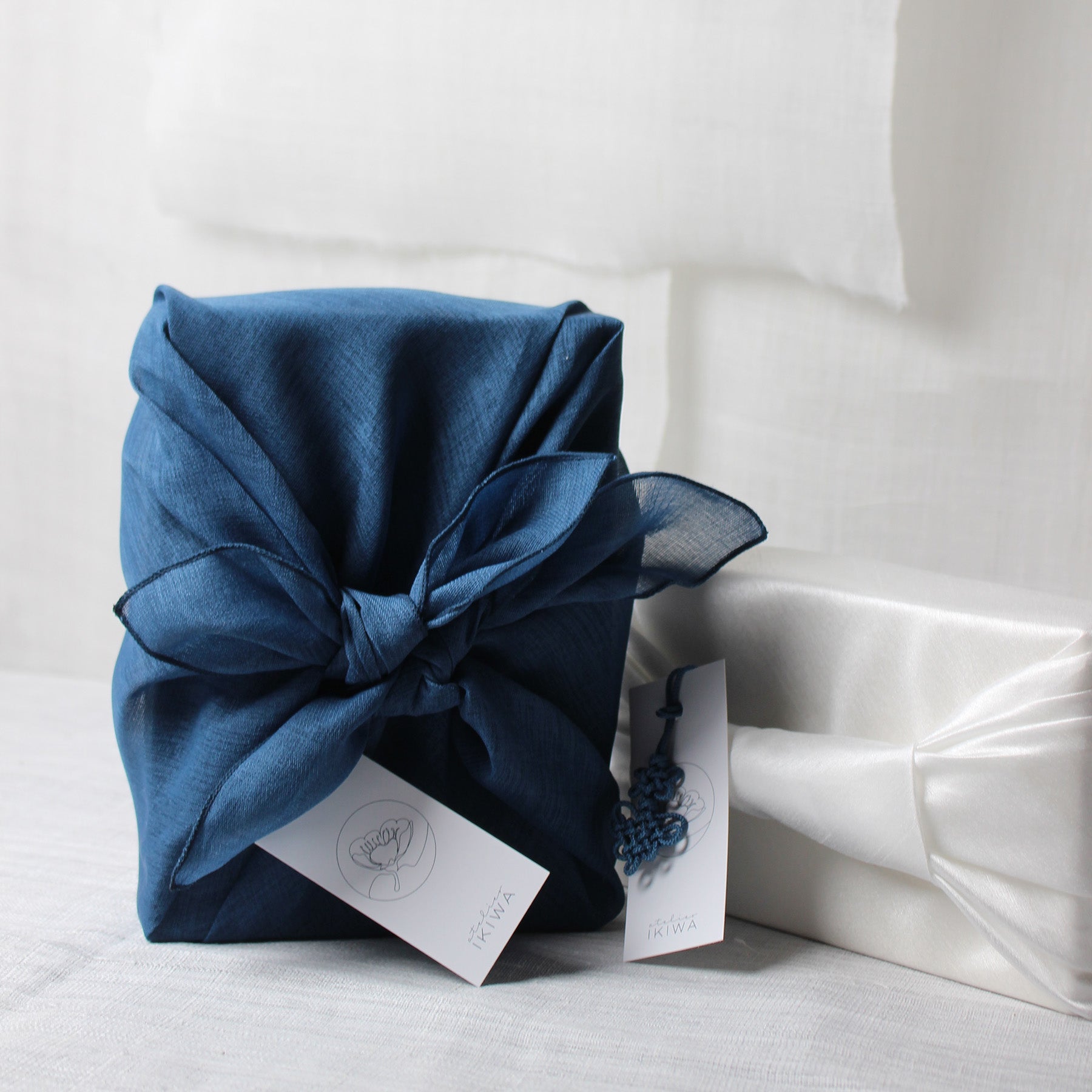
The art of wrapping
The precious objects are wrapped in a beautiful cloth beautifully tied according to the little-known art of Korean pojagi. Details and conditions >


